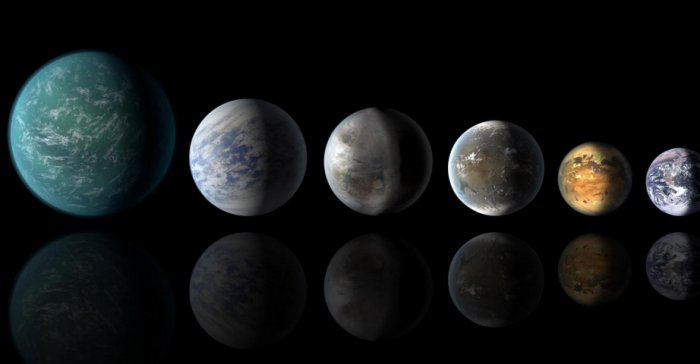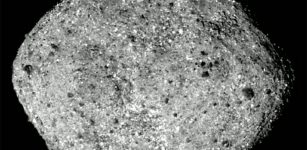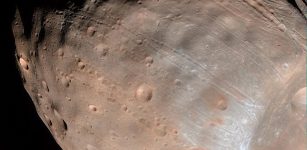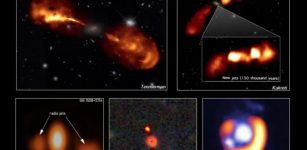Water-Worlds Are Scattered Throughout The Milky Way
Eddie Gonzales Jr. – MessageToEagle.com – Exoplanets, which are between two to four times the size of Earth, and contain a large amount of water, are scattered throughout the Milky Way, according to a new study.
These water-worlds may play an important role in the search for life in our galaxy.
Now a new evaluation of data from the exoplanet-hunting Kepler Space Telescope and the Gaia mission indicates that many of the known planets may contain as much as 50% water. This is much more than the Earth’s 0.02% (by weight) water content.

“It was a huge surprise to realize that there must be so many water-worlds”, said lead researcher Dr Li Zeng (Harvard University),
Scientists have found that many of the 4000 confirmed or candidate exoplanets discovered so far fall into two size categories: those with the planetary radius averaging around 1.5 that of the Earth, and those averaging around 2.5 times the radius of the Earth.
After analyzing the exoplanets with mass measurements and recent radius measurements from the Gaia satellite, an international team of researchers have prepared a new model of the exoplanets’ internal structure.
“We have looked at how mass relates to radius, and developed a model which might explain the relationship”, said Li Zeng. The model indicates that those exoplanets which have a radius of around x1.5 Earth radius tend to be rocky planets (of typically x5 the mass of the Earth), while those with a radius of x2.5 Earth radius (with a mass around x10 that of the Earth) are probably water worlds”.
“This is water, but not as commonly found here on Earth”, said Li Zeng in a press release and added that their surface temperature is expected to be in the 200 to 500 degree Celsius range and their surface may be shrouded in a water-vapor-dominated atmosphere, with a liquid water layer underneath.
“Moving deeper, one would expect to find this water transforms into high-pressure ices before we reaching the solid rocky core. The beauty of the model is that it explains just how composition relates to the known facts about these planets.”
Li Zeng continued, “Our data indicate that about 35% of all known exoplanets which are bigger than Earth should be water-rich. These water worlds likely formed in similar ways to the giant planet cores (Jupiter, Saturn, Uranus, Neptune) which we find in our own solar system.
The remote water-worlds in the Milky Way will be found and further investigated with the help of the newly-launched TESS mission and the next generation space telescope, the James Webb Space Telescope*.
Written by Eddie Gonzales Jr. – MessageToEagle.com Staff










